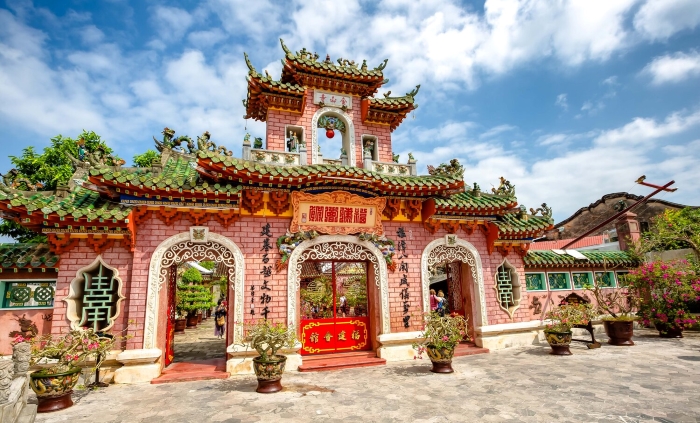The assembly hall serves as a venue for fellow countrymen's community activities. There are currently four assembly halls in Hội An: Cantonese, Fujian, Hainan, and Chaozhou, which correspond to four popular population groups; and one common assembly hall - Ngũ Bang assembly hall (Chinese assembly hall). All of them are on Trần Phú and Nguyễn Duy Hiệu streets, facing South.
The Fujian assembly hall was established in 1697, at the end of the 17th century. When the Chinese took over it in 1757, they rebuilt and roofed it with tiles. The two biggest restorations took place in 1971 and 1974.

The common form of assembly halls in other ancient cities such as Hanoi, Hue, Nam Dinh... is an overall architectural work consisting of a front large gate, a large courtyard with ornamental plants, a penjing, a vestibule, a worship space, and a main hall.
At the Fujian assembly hall, after a main gate, there is a large and solid triple gate. The roots of the trees are sculpted and carved with many animals by the artisans of Kim Bồng carpentry village - a famous craft village in Quảng Nam.
The vestibule is a gathering place for people to interact and exchange activities. There are 2 reliefs on the left and right. The worship space was an open space, now it has a roof.
The main hall is the place with the largest architecture of the whole assembly hall. Here, Thien Hau Thanh Mau is worshiped on the middle altar.
People worship a sailboat model on the left of the main hall; inside is the living space of people traveling to the sea: rooms, a kitchen, a place of worship, and so on.
Reader Comments
Newer articles
Older articles